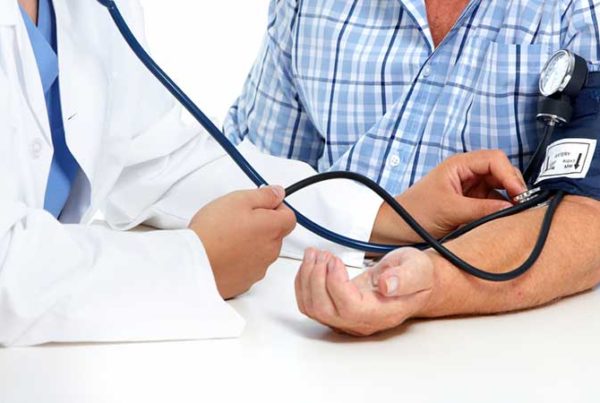
How can we best personalize our exercise needs? The foods to eat? Can we reduce the risk of injury, illness and disease? Yes. Just ask.
Star Trek had it right. The doctor scanned the body using a small hand-held device to evaluate for injury, illness and disease, seemingly leading to the right remedy every time.
For centuries, and long before the Starship Enterprise zoomed off for other galaxies, health practitioners successfully assessed patients by asking the right questions. Today, we can do this online with small devices like smartphones, tablets or computers.
Like traditional face-to-face Q&A evaluations — “How are you feeling, Mr. Jones?” — modern online surveys can also ask key questions that offer users the potential for an accurate health and fitness assessment up to 90 percent or more of the time. Essentially, the time-consuming history-taking process is merged with high tech for a relatively rapid response.
Include some simple home tests and the assessment process can be more accurate. These same tools are also useful to monitor ongoing progress, helping ensure you stay on track.
It’s important to note that self-managing helps us personalize our functional health and fitness, rather than diagnosing a disease. By improving physical, biochemical and mental-emotional function we can reduce the risk of disease, improve quality of life and athletic performance, and even prevent illness, including infections. While disease is usually the end result of dysfunction, a diagnosis, such as diabetes, cardiovascular disease, etc., is made by health practitioners.
Without an appropriate initial assessment, trying to manage one’s lifestyle can be guesswork, often leaving us to address symptoms and not causes. This is one way the MAF Method helps people personalize their health and fitness.
Surveying Health Risk
Wearing a seatbelt while driving is an example of how we can significantly reduce the risk of harm in the event of a crash. In healthcare, risk is how we evaluate the potential or likelihood of injury, illness or disease. Rising risk is the increased chance of becoming unhealthy, and there is always some risk (versus none).
The first step in risk assessment is evaluating signs and symptoms. These are indications of reduced health and fitness, and clues to the causes. They can reflect low, moderate or high risk of current or future dysfunction and disease.
Factors that increase risk are those that promote poor health or fitness; in most cases these risks can be reduced through personalized lifestyle improvements, often quickly and significantly.
Those with high risk are most likely to develop related problems, moderate risk more likely, and those at low risk less likely.
Surveys are a well-researched accurate methods of assessing risk. One key to success is asking the right questions; another is that the answers must be honest. In addition, enough questions must be asked to cover all the possible risk factors of a particular condition. Heart disease risk, for example, is not always associated with the same few signs and symptoms in all cases.
Most people have taken surveys when filling out questionnaires at a doctor’s office. They are similar to and can accompany a face-to-face consultation. Gather enough information and an individualized picture of overall health and risks is obtained, leading to a better understanding of the causes of related signs and symptoms, and risks. The primary focus of lifestyle changes to mitigate risk by following the best-matched remedies. Personalized to individual needs, these may include modifying exercise training, adjusting food choices or managing stress.
An assessment inventory typically evaluates the risk of dysfunction in key body systems, including immune, intestinal, hormonal, muscular and the brain. While this approach has been the foundation of healthcare for centuries, the process today is too often shortened or skipped, and instead symptoms are treated.
Home Tests
Simple at-home tests can also add to the knowledge about health and fitness status. A most important one is body fat. This is easily, accurately and scientifically determined in anyone by measuring the waist and height. The waist at the naval should be less than half the height. If it’s not, it indicates excess body fat, a condition called “overfat.”
Overfat is a common and primary cause of increased risk of three categories of health problems affecting most people in the world today:
- Preventable chronic disease (diabetes, cardiovascular disease, cancer, etc.).
- Physical injury/disability and pain.
- Viral, bacterial and other infections.
(Most deaths worldwide are also associated with one or more categories.)
In addition, overfat significantly impairs athletic performance.
Assessing Fitness
Aerobic function and physical strength are the two most important factors that increase fitness. Both can be easily and accurately monitored by individuals using simple devices. With a pair of earbuds, for example, you can monitor your heart rate, and test fitness capability by measuring speed or power at a given submax HR (and track this on an app).
Strong muscles are important too, accurately monitored by a hand-held grip measuring device that reflects full body strength.
Like surveys, fitness testing can help predict potential problems, allowing for appropriate changes that lower the risk of injury, illness and poor performance.
Resting heart rate is another fitness assessment. If it’s above 80 beats per minute it is not just an indication of poor fitness but a high risk for cardiovascular disease, chronic inflammation and overall mortality. Even rates between 66 and 79 are associated with a moderate risk of these conditions.
Prevention is clearly a key to developing and preserving health and fitness, especially as we age. Recognizing a problem early, before the onset of pain or dysfunction, or a diagnosis of disease, is the best goal.
Even after disease strikes, this approach can be very useful — the body is so resilient there is much we can do to improve ourselves in dramatic ways.
As a student, I learned how vital the assessment process was, and when I began working with patients and athletes, the extra time and effort spent implementing this to personalize therapy and training was important. It helps avert treating symptoms, and instead addressed the causes of poor health and reduced athletic performance. Today, one goal of MAF is to give users the tools necessary to accomplish this electronically. Below are some of those links.
Until we have a Star Trek device, we can use the latest effective high-tech methods to assess, monitor and personalize health and fitness.
Helpful links
Key non-exercise heart-rate tools
References
Keifenheim KE, et al. Teaching history taking to medical students: a systematic review. BMC Med Educ. 2015; 15. doi: 10.1186/s12909-015-0443-x
Peterson MC, et al. Contributions of the history, physical examination, and laboratory investigation in making medical diagnoses. West J Med. 1992; 156(2).








